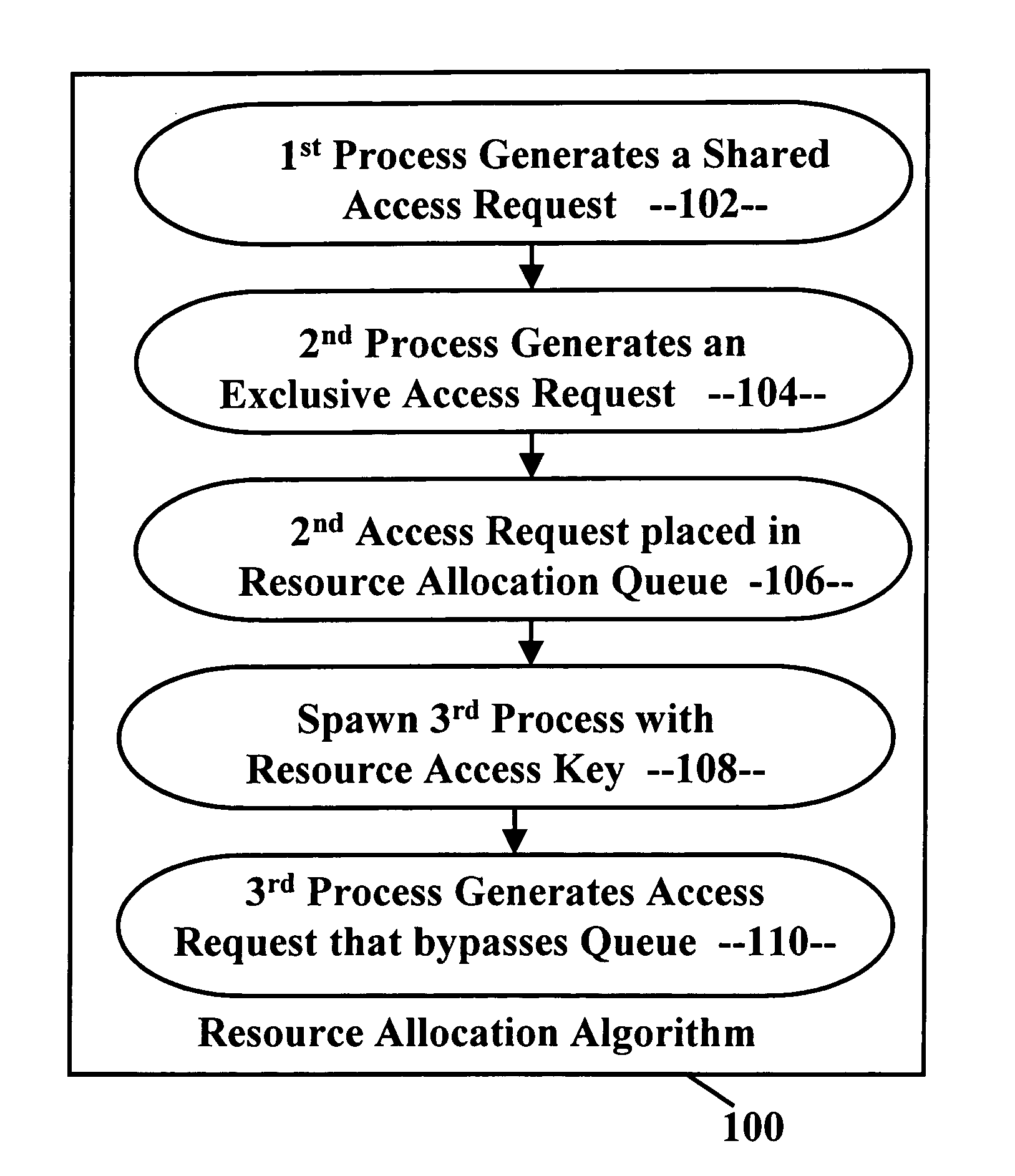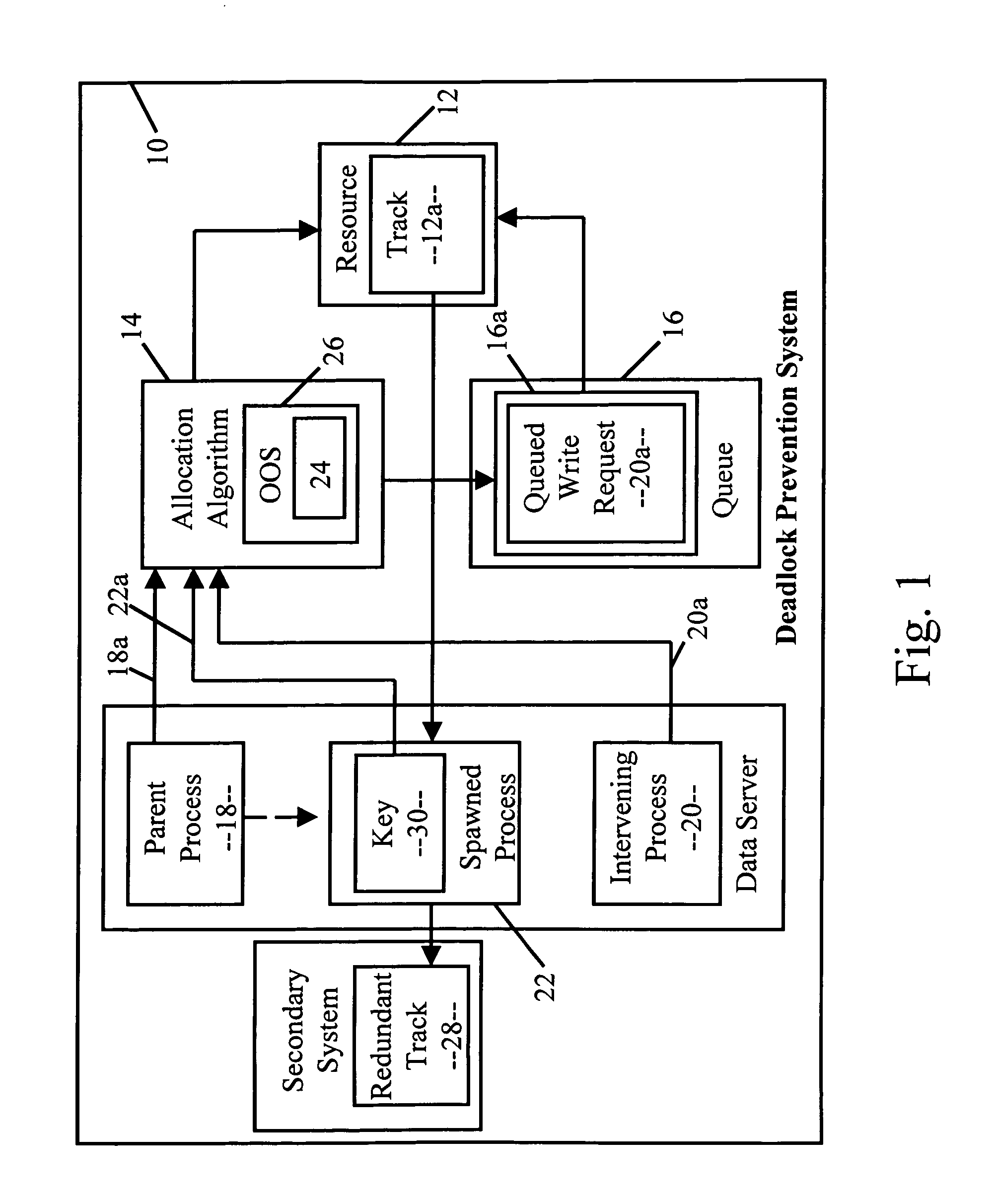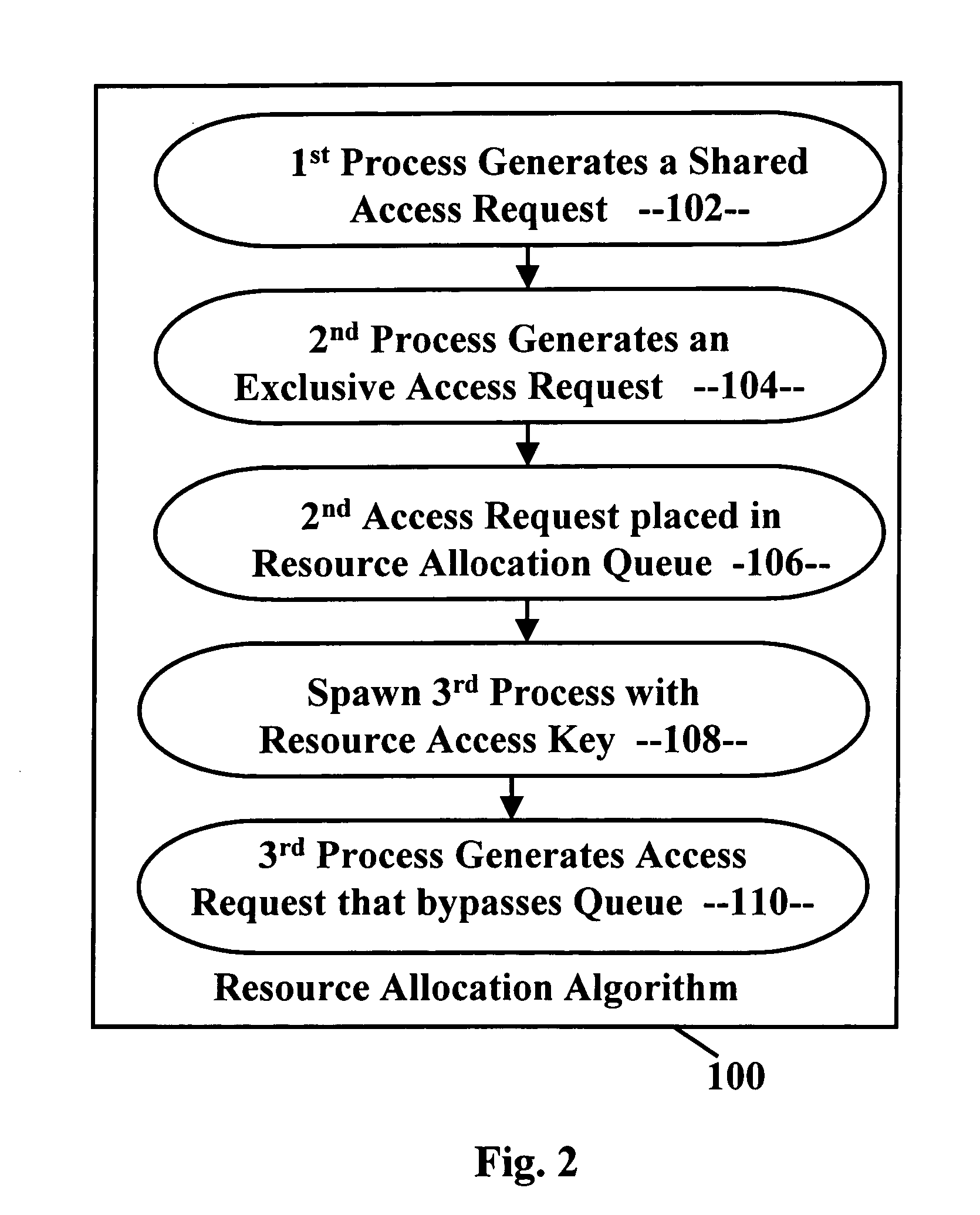Deadlock-prevention system
a technology of deadlock and preventive system, applied in the direction of program control, multi-programming arrangement, instruments, etc., can solve the problems of contention for access to the drive-head, inability to perform other transactions at the same time, and corrupt data on the same track
- Summary
- Abstract
- Description
- Claims
- Application Information
AI Technical Summary
Benefits of technology
Problems solved by technology
Method used
Image
Examples
Embodiment Construction
[0018] This invention is based on the idea of passing a resource-access key from a parent process to a spawned process indicating a current level of access to an allocated resource. The invention disclosed herein may be implemented as a method, apparatus or article of manufacture using standard programming or engineering techniques to produce software, firmware, hardware, or any combination thereof. The term “article of manufacture” as used herein refers to code or logic implemented in hardware or computer readable media such as optical storage devices, and volatile or non-volatile memory devices. Such hardware may include, but is not limited to, field programmable gate arrays (“FPGAs”), application-specific integrated circuits (“ASICs”), complex programmable logic devices (“CPLDs”), programmable logic arrays (“PLAs”), microprocessors, or other similar processing devices.
[0019] Referring to figures, wherein like parts are designated with the same reference numerals and symbols, FIG...
PUM
 Login to View More
Login to View More Abstract
Description
Claims
Application Information
 Login to View More
Login to View More - R&D
- Intellectual Property
- Life Sciences
- Materials
- Tech Scout
- Unparalleled Data Quality
- Higher Quality Content
- 60% Fewer Hallucinations
Browse by: Latest US Patents, China's latest patents, Technical Efficacy Thesaurus, Application Domain, Technology Topic, Popular Technical Reports.
© 2025 PatSnap. All rights reserved.Legal|Privacy policy|Modern Slavery Act Transparency Statement|Sitemap|About US| Contact US: help@patsnap.com



